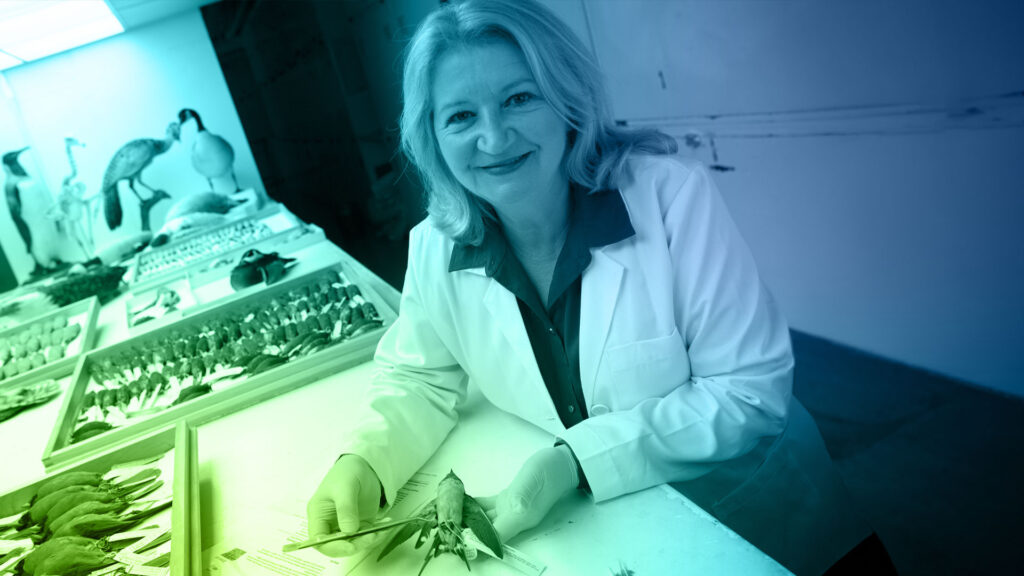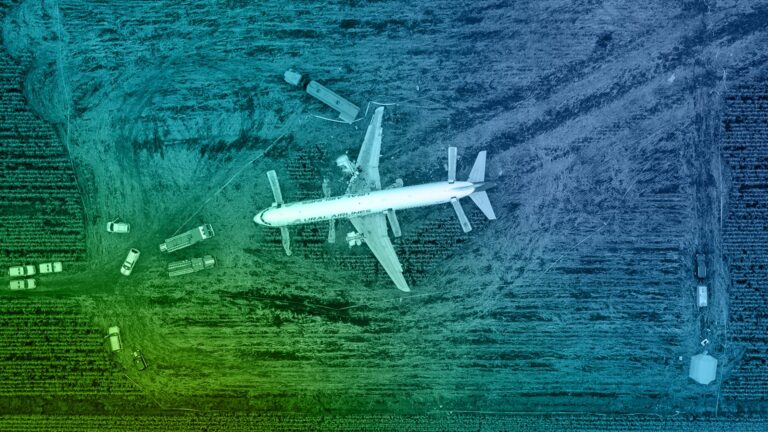Program Manager, the Smithsonian National Museum of Natural History’s Feather Identification Lab
Dr Carla Dove is smack in the middle of her busiest time of the year – the fall migration. ‘All the birds that came here to breed, and their young, are heading south for the winter, so our days at the moment are very busy’. Dr Dove and her team of four in the Smithsonian’s Feather Identification Lab receive about 50-100 packages a day from the US Air Force, the US Navy and civil aviation (airlines and airports) containing bird feathers, and remains or snarge (‘bird ick’, as Dove describes it) collected following bird strikes. Over a year, the team receives about 11,000 such samples.
The team begins their morning opening the mail and triaging the samples into three batches: whole feathers, snarge and ‘others’, which may be incomplete feathers, those which are not as distinctive, or samples which are not as straightforward. ‘If there are whole feathers, and if their colours and patterns are distinctive, we can take them out to the Museum’s collection and using our familiarity with birds, pretty much identify them the same day,’ she says. The Museum’s collection of more than 640,000 birds is the third largest in the world.
‘We prepare the snarge in alphanumeric DNA plates – there are 96 little tubes in a plate – and when we fill that it goes to the DNA lab for processing. At times like this, they fill up pretty quickly – last week we did four plates.’ The sample’s unique DNA barcode is compared to a growing library of barcode sequences to identify the species.
DNA is not a silver bullet though, Dove says. ‘About 15-20 per cent of samples fail using DNA testing. Maybe the sample was degraded, it got too hot, or it was contaminated by fuel oil.’ For these ‘leftover things’: failed DNA samples, or a pile of indistinct brown feathers, or for quality assurance when a DNA result might be suspicious, ‘we bring the samples back and take a closer look at the morphology – the microscopic structure of the sample.’
Dove’s mentor, the Museum’s Roxy Laybourne (1910-2003), was the pioneer of morphological bird ID. ‘She didn’t have DNA,’ Dove says, ‘and (even today) about 30 per cent of cases still involve morphology at some point’. Morphology examines feather microstructure, and in particular the downy barbules of the feather, which provide identifications for the ‘group’ or Order of some birds. Laybourne used this in one of her early bird strike analyses in 1960, reaching the surprising conclusion that the Eastern Airlines flight 375 crash into Boston Harbour was the result of hitting multiple 85 g starlings. Since then, Dove says, ‘we can show that armed with species ID data, airport biologists can do something about birds on and near airports,’ managing food supply, water supply, and knowing when different species are migrating, breeding etc.
Moreover, ‘we now have over 30 years of airport/bird strike data, and we can show that even though the number of strikes reported continues to rise, the cost of damage is decreasing’, as wildlife hazards are managed more effectively through increased understanding of the species involved.
Dove’s passion for birds continues in her private life – she has just returned from a birding trip across the west of the United States, camping and fishing in the national parks. Perhaps in contrast to the painstaking pace of her day job, she also loves speed: watching Formula 1 racing … and rollercoasters. And her favourite F1 drivers? Britain’s Sir Lewis Hamilton, Australia’s Daniel Ricciardo and Spain’s Carlos Sainz Jr.




